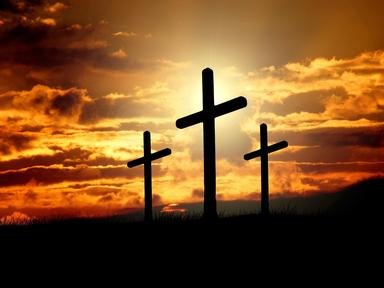Quiz Answer Key and Fun Facts
1. The United States of America shares its principal patron saint with hundreds of countries, cities, organizations and even religious concepts. She is regarded as uniquely placed as an intercessor, due to family ties. Can you name her?
2. Even atheistic nations can have a patron saint. The People's Republic of China has been officially atheist since 1949. Yet the most popular of all patron saints has been assigned, with a local title. Elsewhere she has been described in countless ways, one famous way being "a woman robed in the sun". Can you identify the Lady who is China's primary patron saint?
3. "The Island of Saints and Scholars", Ireland, has had plenty of both, and is graced with not one but three patron saints. Interestingly, all three are venerated by both Catholics and Anglicans on this island often bloodied by religious conflict. Lesser known are Saints Brigid and Columba, but almost everyone knows who Ireland's primary patron saint is. Do you?
4. Given France's long association with Roman Catholicism, it's unsurprising that the nation has multiple patron saints. The primary patron is the Virgin Mary (as Our Lady of the Assumption), which was confirmed in 1920 when another virgin was given precedence over the remaining patron saints. What indomitable young woman, framed and burned as a heretic, was not only exonerated but made France's second ranking patron saint?
5. He is one of the more popular patron saints, despite how little is actually known about him. Born in the Levant (at least three locations are claimed) of Grecian descent, he became a Roman soldier, then a Christian, and in 303 a martyr, for refusing to make appropriate sacrifices to the official deities. He has his own cross, started being called a dragonslayer in the 11th Century, and became England's patron saint. Who is our man of mystery history?
6. Italy is favored with a pair of patron saints of great renown. One is the much loved St. Francis of Assisi, who also looks after San Francisco, California, the environment, and the Cub Scouts. Italy's other patron saint is a remarkable, largely self-educated woman who became a nun, Scholastic theologian (one of two women recognized as a "Doctor of the Church", alongside St. Theresa of Avila), ambassador, philosopher and correspondent with Kings and Popes. The rooftops of her city are known for their distinctive brown color. Can you name this amazing lady who is also counted as a patron saint for all Europe?
7. Not all of the patronage of saints is attached to places. Sometimes a saint covers a wide range of people, places, things, even concepts. One man is patron saint to eight countries (Canada among them), of fathers, carpenters, travellers, and of the Roman Catholic Church's concept of a "happy death". In 1870, Pope Pius IX proclaimed him the patron saint of the entire Roman Catholic Church. With all these patronage titles he stands close to the Virgin Mary, appropriately enough. Who is this great patron saint?
8. What's in a name? Most saints get by with one or two names. One of the original twelve Apostles was not so lucky, since his given name was the same as Iscariot's. Perhaps it's appropriate that he became the patron saint of lost causes and those in desperate peril. Given those patronages, it was natural that he became the patron saint of hospitals, too. Notably, a famous children's cancer hospital was founded under the saint's name by entertainer Danny Thomas in Memphis, Tennessee. Who is our saint with a name issue?
9. You might think that being a levitating monk would be well received in the Catholic Church. Not so much. Poor Joseph of Cupertino spent much of his life being shipped from monastery to monastery, while required to live in isolation. He was even sent before the Inquisition. He was found blameless, and on 21 October 1638 he levitated before the Inquisition tribunal. Pope Urban VIII also saw Joseph airborne. Even with the quality witnesses, it took over 110 years for him to be canonized. What professions would you think would be within the patronage of a floating friar like St. Joseph of Cupertino?
10. You wouldn't likely expect that the patron saint of the internet would have lived in the 7th Century, but that is when St. Isidore of Seville flourished. Since St. Isidore died some 1330 years before the first ARPANET connection you might ask why Pope St. John Paul II made the declaration in 1997. It has to do with a similarity between St. Isidore's great work and that of the internet. What do you think it was?
Source: Author
Jdeanflpa
This quiz was reviewed by FunTrivia editor
looney_tunes before going online.
Any errors found in FunTrivia content are routinely corrected through our feedback system.
